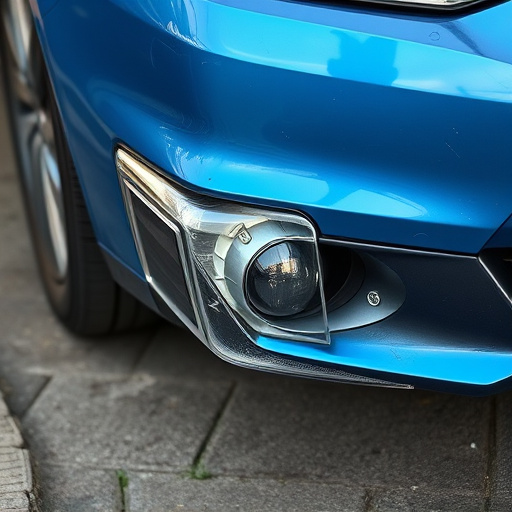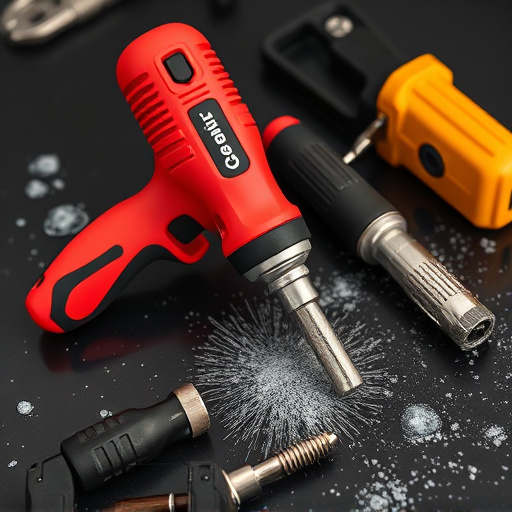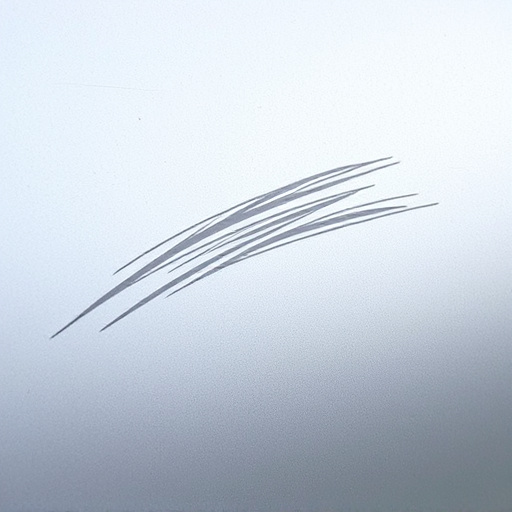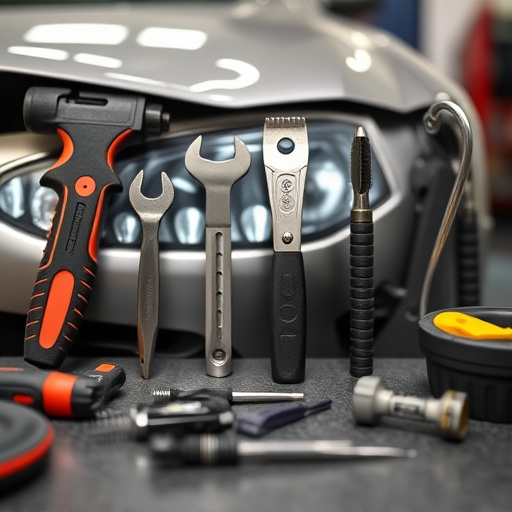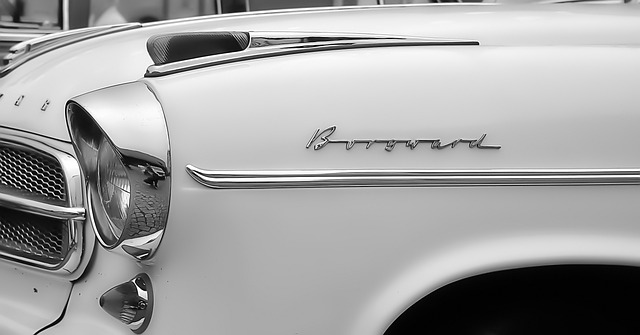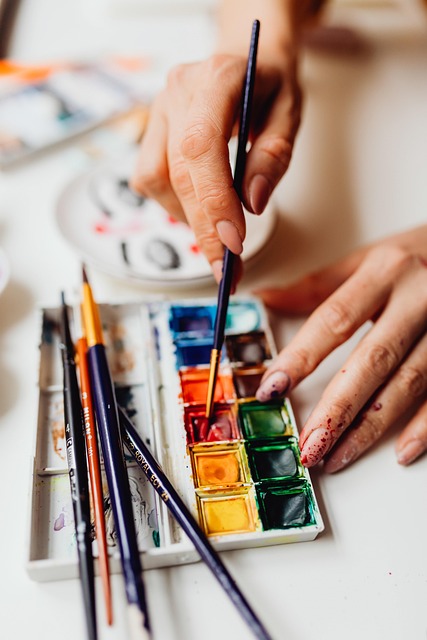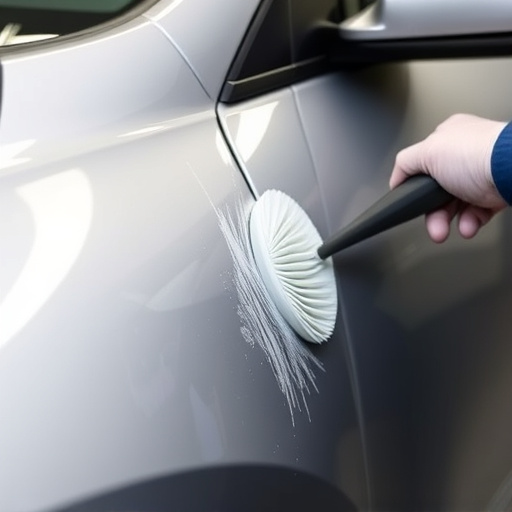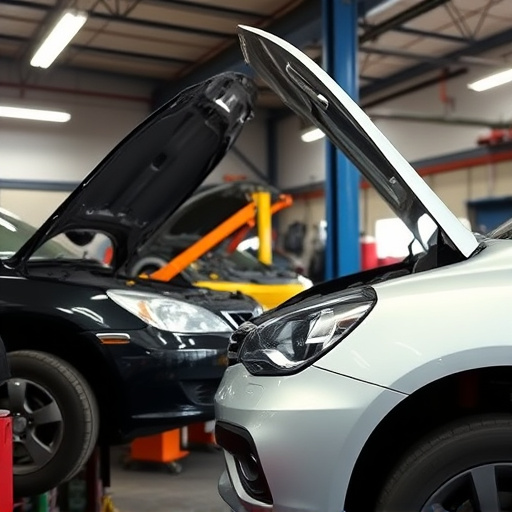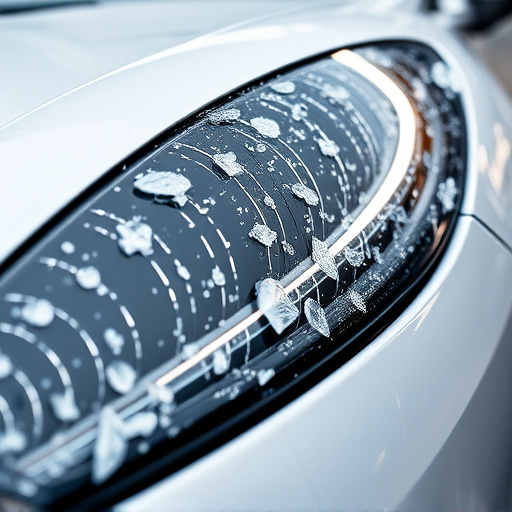Color sanding and buffing are advanced car repair techniques for scratch and dent removal, using specialized tools and abrasives to match original paint colors precisely while restoring surfaces seamlessly. These methods offer professionals and enthusiasts precise control over paint levels, enhanced durability, and glossy finishes, making them essential for high-quality repairs and shop competitiveness. To master these techniques, set up a clean workspace, use varied grit sandpaper (including specialized color sanding paper), apply gently in thin layers, transition to buffing with compound and buffer, and maintain tools for consistent results.
Discover the transformative power of color sanding and buffing in automotive repairs. This advanced technique goes beyond traditional methods, offering a seamless blend of color with the vehicle’s existing surface. By understanding the fundamentals of color sanding and buffing, you’ll unlock numerous advantages. From improved aesthetics to enhanced durability, these techniques elevate repair quality. Learn how incorporating color into your processes can result in flawless finishes that surpass expectations.
- Understanding Color Sanding and Buffing: The Basics
- Benefits of Incorporating Color Techniques into Repair Processes
- Best Practices for Achieving High-Quality Results with Color Sanding and Buffing
Understanding Color Sanding and Buffing: The Basics

Color sanding and buffing are advanced techniques used in automotive detailing and repair, particularly for car scratch repair and dent removal. This process involves using specialized tools and abrasives to gently sand and smooth out minor imperfections on a vehicle’s surface while matching its original color precisely.
The basics begin with preparing the damaged area by cleaning and decontaminating it. Then, a fine-grit sanding pad is used to gently buff away the affected paint, revealing the underlying surface. After sanding, a range of progressively finer abrasives are applied, each one refining the repair further until the surface is smooth and seamless. The magic lies in the color matching process, where specialized compounds and buffing tools ensure the final finish perfectly blends with the surrounding paintwork, making the paintless dent repair virtually invisible to the naked eye.
Benefits of Incorporating Color Techniques into Repair Processes

Incorporating color sanding and buffing techniques into repair processes offers a multitude of benefits for both auto body shops and car body restoration enthusiasts. These advanced methods go beyond traditional repairs by ensuring that the final finish is not just flawless but also perfectly aligned with the vehicle’s original aesthetic. Color sanding allows precise adjustment of paint levels, enabling technicians to achieve seamless blends between old and new paintwork—a crucial aspect in auto bodywork where hidden imperfections can dramatically affect overall repair quality.
Furthermore, color buffing enhances the durability and glossiness of the painted surface. By meticulously smoothing out any remaining scratches or uneven textures, these techniques create a glossy, vibrant finish that not only looks stunning but also protects the paint job from future damage. For auto body shops seeking to elevate their services, mastering color sanding and buffing is essential; it distinguishes their work, ensuring satisfied customers and a competitive edge in the market.
Best Practices for Achieving High-Quality Results with Color Sanding and Buffing

To achieve high-quality results with color sanding and buffing, start by preparing your workspace and materials. Ensure a clean, well-lit area with proper ventilation to prevent the buildup of dust and chemicals. Use high-quality sandpaper in a variety of grits, starting with coarser grains for initial shaping and ending with finer grains for smooth finishing. For best results, choose sandpaper designed specifically for color sanding to minimize particle contamination.
Next, practice patience and precision. Begin by gently applying the sandpaper to the damaged area, following the contour of the surface. Work in thin, even layers, taking care not to over-sand or remove too much material. After each pass, inspect your progress and use a clean cloth to wipe away dust and debris. Once the surface is smooth and evenly textured, move on to buffing. Select an appropriate compound and apply it with a buffer, working in small sections until a smooth, glossy finish is achieved. Regular cleaning of tools and buffers between applications ensures consistent results and prevents cross-contamination.
Color sanding and buffing are powerful tools that significantly enhance repair quality by offering precise control over surface finish. By understanding these techniques and adopting best practices, professionals can achieve exceptional results, ensuring repairs that blend seamlessly with the original material. Incorporating color techniques into repair processes not only improves aesthetics but also boosts overall durability, making them indispensable for high-quality workmanship.
